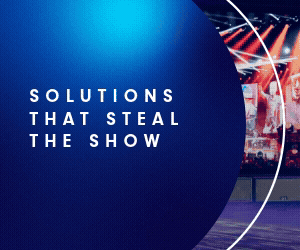The Future At Your Fingertips
- juliana6232

- May 23, 2023
- 3 min read
From Virtual Reality to the Optimal Workplace in Production

In the middle of a production hall in Wedemark near Hanover, a man stands with virtual reality goggles on his head and a controller in his hand. He turns alternately to the right and left and makes movements in the air with both arms ‐ while around him microphones are being manufactured. What is he doing? Julian Born, Lean Manager Supply Chain at the Sennheiser Group, is planning a future workplace.
Previously, the space where Julian was now standing was filled with an assortment of cardboard models.
These were used to construct workplaces as full‐scale models before they were actually set up in the production hall. In this way, employees could try out whether everything was in the right place for the work steps they would carry out later. Is it easy to grip the screws, are the tools optimally positioned, would they get stiff muscles and backs after working for a long time? The structure of the cardboard workstation was optimized and rebuilt until everything fitted together in the best possible way. Then the workstation was set up according to the cardboard model. Known as cardboard engineering, this process had been used at Sennheiser for many years, due to the audio specialist’s focus on ergonomics and effective process flow design in the workplace.
Cardboard engineering, while effective, was also cumbersome and costly ‐ and this is why four years ago virtual reality was introduced as an alternative solution. VR enables more comprehensive planning of a workplace, which starts with the estimation of walking distances and the realistic simulation of distances. Beyond this, the natural interaction in the virtual reality environment allows all participants ‐ even without prior knowledge ‐ to create and modify objects in the simulation in a very short time. In this way, every employee can easily test their own workplace virtually in advance.
How does Sennheiser do it?
For the past four years, the audio specialist has been working with an innovative start‐up called Halocline, with the two companies establishing a development partnership. Since 2018, Sennheiser has been involved in the development of Halocline's VR editor solution. The Sennheiser team tested early beta software versions of solutions developed by Halocline and provided feedback on new features and handling. Insights into the workflow at the audio specialist also helped to focus the scope of development and required features. With many individual workstations and sedentary activities in production, the two companies focused the solution on small‐scale processes.
But that was just the beginning of the virtual journey. In the meantime, VR is not just replacing cardboard
engineering at Sennheiser. In the spirit of effectively strengthening the production footprint at Sennheiser, VR is also being used, for example, in the planned expansion of the plant in Romania to achieve fast and optimal results. During this planning stage, VR is allowing entire hall layouts or production cells to be simulated. For this purpose, the planners from Germany work together with their colleagues from production in Romania. In this way, workplaces are planned and optimized together across national borders before they are actually implemented. The feedback from production is implemented in VR and followed live by all participants. "At the beginning, it was pure curiosity. In the meantime, we see many advantages that the use of virtual reality in production offers us," says Andreas Grüning, Plant Manager Germany at Sennheiser. "It's impressive how many of our use cases VR provides solutions for. It enables a whole new level of planning and digital collaboration."
Music of the future
And what will the future hold for Sennheiser's production? In addition to VR applications, you can already find cobots, i.e. robots that work together with humans, in a wide variety of production areas. And there are to be even more of them in the future. In particular, they will take over tasks that are less attractive to employees. The teams at Sennheiser and Halocline are now working together on exactly what this should look like, because there are still a few questions to be answered. How can more robots be incorporated into work processes? Where do they increase production efficiency? Where can they shorten walking distances, be used for ergonomic workplace design? Details that still need to be clarified. But one thing is certain: the mood music at Sennheiser is thrillingly futuristic.
www.sennheiser‐hearing.com














Comments